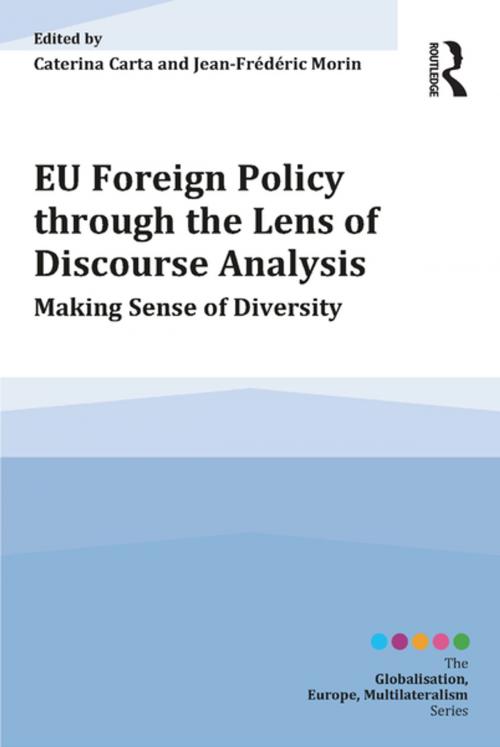EU Foreign Policy through the Lens of Discourse Analysis
Making Sense of Diversity
Nonfiction, Social & Cultural Studies, Political Science, International, International Relations| Author: | ISBN: | 9781317140252 | |
| Publisher: | Taylor and Francis | Publication: | April 22, 2016 |
| Imprint: | Routledge | Language: | English |
| Author: | |
| ISBN: | 9781317140252 |
| Publisher: | Taylor and Francis |
| Publication: | April 22, 2016 |
| Imprint: | Routledge |
| Language: | English |
Leading scholars in discourse analysis and European foreign policy join forces in this book, marking a real breakthrough in the literature. Not only do they offer original perspectives on European foreign policy, but they bring together various theories on foreign policy discourses that remain too often isolated from each other.
This theoretical diversity is clearly reflected in the book’s four-pronged structure: Part I - Post-structuralist Approaches (with contributions from Thomas Diez, Henrik Larsen and Beste Isleyen); Part II - Constructivist Approaches (with contributions from Knud Erik Jørgensen, Jan Orbie, Ferdi de Ville, Esther Barbé, Anna Herranz-Surrallés and Michal Natorski); Part III - Critical Discourse Analytical Approaches (with contributions from Senem Aydin-Düzgit, Amelie Kutter, Ruth Wodak, Salomi Boukala and Caterina Carta); Part IV - Discursive Institutionalist Approaches (with contributions from Ben Rosamond, Antoine Rayroux and Vivien A. Schmidt). The volume is the first full-length study on how to apply different discourse analytical approaches and methodologies to European foreign policy. The paperback edition makes for a unique selling point as a course text.
Leading scholars in discourse analysis and European foreign policy join forces in this book, marking a real breakthrough in the literature. Not only do they offer original perspectives on European foreign policy, but they bring together various theories on foreign policy discourses that remain too often isolated from each other.
This theoretical diversity is clearly reflected in the book’s four-pronged structure: Part I - Post-structuralist Approaches (with contributions from Thomas Diez, Henrik Larsen and Beste Isleyen); Part II - Constructivist Approaches (with contributions from Knud Erik Jørgensen, Jan Orbie, Ferdi de Ville, Esther Barbé, Anna Herranz-Surrallés and Michal Natorski); Part III - Critical Discourse Analytical Approaches (with contributions from Senem Aydin-Düzgit, Amelie Kutter, Ruth Wodak, Salomi Boukala and Caterina Carta); Part IV - Discursive Institutionalist Approaches (with contributions from Ben Rosamond, Antoine Rayroux and Vivien A. Schmidt). The volume is the first full-length study on how to apply different discourse analytical approaches and methodologies to European foreign policy. The paperback edition makes for a unique selling point as a course text.















